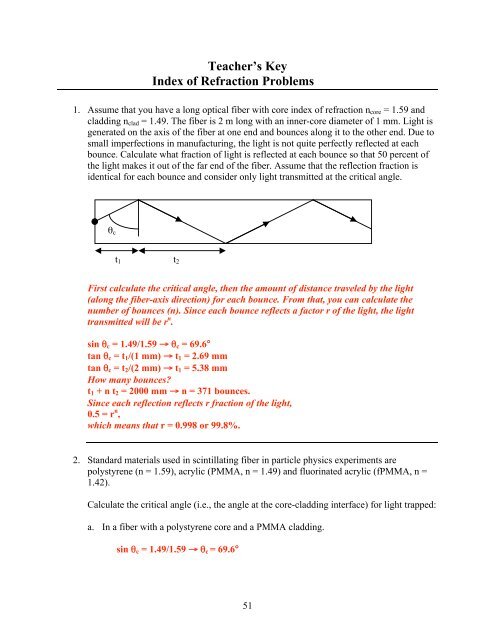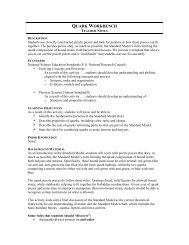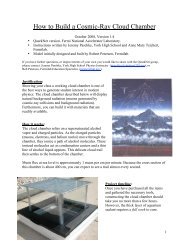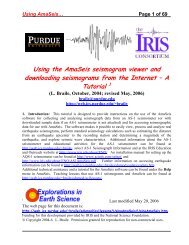Teaching Modern Physics - QuarkNet - Fermilab
Teaching Modern Physics - QuarkNet - Fermilab
Teaching Modern Physics - QuarkNet - Fermilab
Create successful ePaper yourself
Turn your PDF publications into a flip-book with our unique Google optimized e-Paper software.
Teacher’s Key<br />
Index of Refraction Problems<br />
1. Assume that you have a long optical fiber with core index of refraction ncore = 1.59 and<br />
cladding nclad = 1.49. The fiber is 2 m long with an inner-core diameter of 1 mm. Light is<br />
generated on the axis of the fiber at one end and bounces along it to the other end. Due to<br />
small imperfections in manufacturing, the light is not quite perfectly reflected at each<br />
bounce. Calculate what fraction of light is reflected at each bounce so that 50 percent of<br />
the light makes it out of the far end of the fiber. Assume that the reflection fraction is<br />
identical for each bounce and consider only light transmitted at the critical angle.<br />
θc<br />
t1<br />
t2<br />
First calculate the critical angle, then the amount of distance traveled by the light<br />
(along the fiber-axis direction) for each bounce. From that, you can calculate the<br />
number of bounces (n). Since each bounce reflects a factor r of the light, the light<br />
transmitted will be r n .<br />
sin θc = 1.49/1.59 → θc = 69.6°<br />
tan θc = t1/(1 mm) → t1 = 2.69 mm<br />
tan θc = t2/(2 mm) → t1 = 5.38 mm<br />
How many bounces?<br />
t1 + n t2 = 2000 mm → n = 371 bounces.<br />
Since each reflection reflects r fraction of the light,<br />
0.5 = r n ,<br />
which means that r = 0.998 or 99.8%.<br />
2. Standard materials used in scintillating fiber in particle physics experiments are<br />
polystyrene (n = 1.59), acrylic (PMMA, n = 1.49) and fluorinated acrylic (fPMMA, n =<br />
1.42).<br />
Calculate the critical angle (i.e., the angle at the core-cladding interface) for light trapped:<br />
a. In a fiber with a polystyrene core and a PMMA cladding.<br />
sin θc = 1.49/1.59 → θc = 69.6°<br />
51








